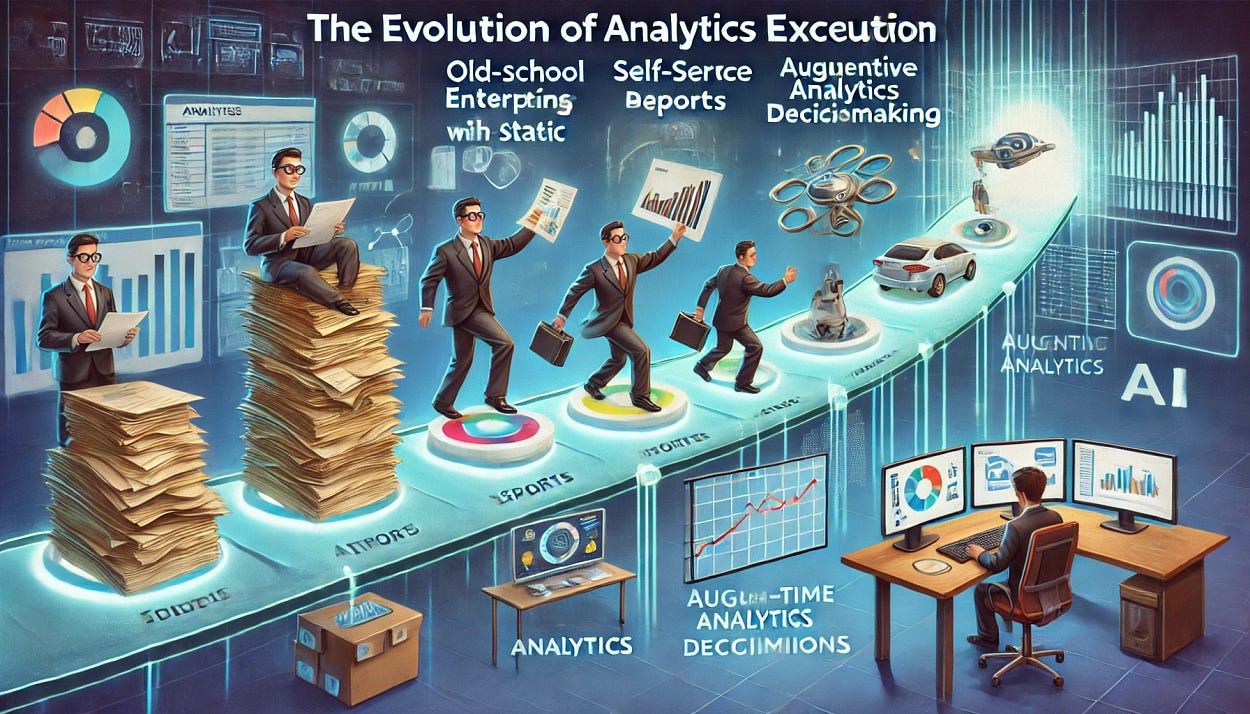The Evolution of Analytics Execution: From BI to AI Agents
Driving the Analytics of 2030, not 2020

The future of analytics isn’t just about better dashboards or faster reports — it’s about rethinking how we harness data to drive competitive advantage. In my full article, Driving the Analytics of 2030, Not 2020, I explored how organizations need to shift their mindset and strategy to keep pace with the evolving analytics landscape. This section walk through The Evolution of Analytics Execution, uncovering key insights and practical strategies for forward-thinking data leaders.
We’ve seen how analytics will permeate every function. Now let’s step back and look at how organizations execute analytics work and how that is changing. This is the Art of Analytics. The journey is something like this:
- Enterprise Reporting
- Self-Service Analytics
- Augmented Analytics
- Decision Support & Agentic AI
Let’s unpack this evolution and the emerging approaches.
Enterprise Reporting: The Starting Point (Yesterday and Today)
In many organizations, analytics started (and sometimes sadly ends) with Enterprise Reporting — a centralized team (often in IT or Finance) producing standard reports and dashboards. This is the era of static monthly reports, PDFs emailed around, or big Business Intelligence platforms managed by a few analysts. It’s valuable, but has limitations: it’s slow, not customized to each decision-maker, and can become a crutch (everyone waits for “the report” instead of exploring data themselves).
Self-Service Analytics emerged to address this. Tools like Tableau, Power BI, and Qlik democratized data visualization by enabling non-technical users to drag and drop their way to insights. The idea was to empower the masses to create their own charts and queries without always going to IT. Culturally, this was a shift: business users taking analytics into their own hands. By 2025, Gartner estimated 90% of analytics consumers will become creators thanks to AI — essentially, everyone can self-service (with AI help). Self-Service Analytics is mainstream since 2010, and by 2030 it will be expected table stakes — similar to how everyone today uses office productivity software.
Read more: [Gartner’s top data & analytics predictions for 2025 — DataGalaxy](<https://www.datagalaxy.com/en/blog/gartners-top-data-analytics-predictions-for-2025/#:~:text=Gartner’s top data %26 analytics,predictions for 2025)
However, self-service alone isn’t enough if people don’t know what to ask or how to interpret data. That’s where the next stage comes in.
The path to 2030’s analytics landscape isn’t about incremental improvements — it requires bold rethinking and strategic transformation. In the next article, we’ll dive into Augmented Analytics.